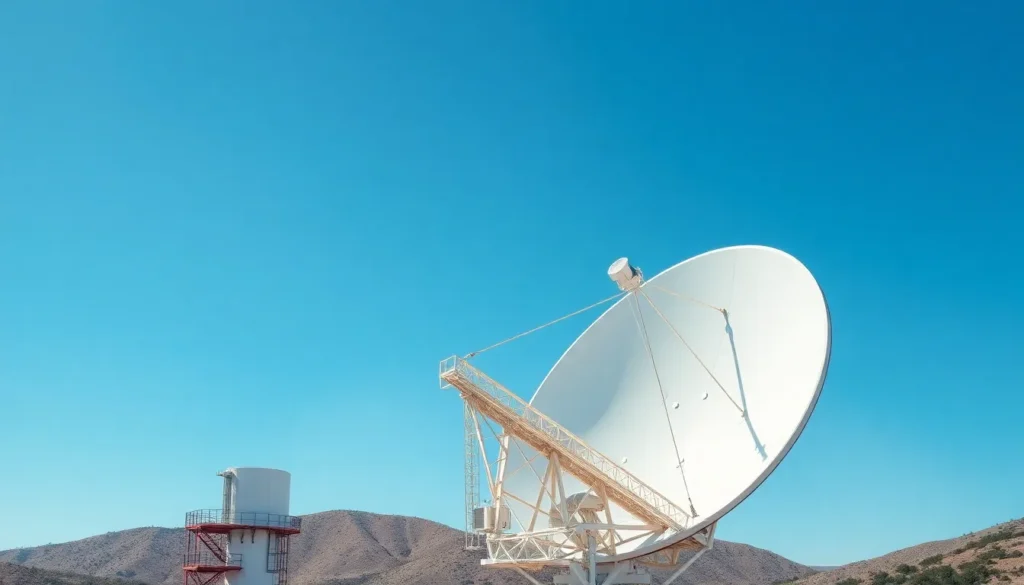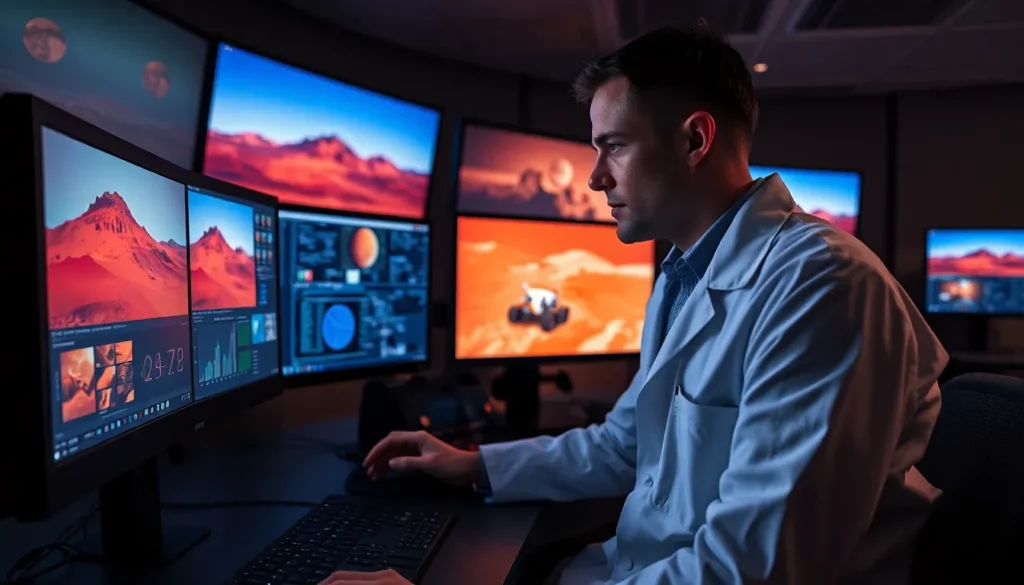Table of Contents
ToggleIn a universe filled with mysteries, planetary exploration is humanity’s ticket to the ultimate cosmic adventure. Imagine zipping through the stars, dodging asteroids like a space cowboy, and uncovering secrets that could rewrite the history of our solar system. It’s not just about finding aliens—though that would be cool—it’s about understanding our place in the vast expanse of space.
Overview of Planetary Exploration
Planetary exploration represents humanity’s endeavor to understand celestial bodies within our solar system. This quest provides insights into cosmic phenomena and the origins of our own planet.
Historical Background
Space exploration began in the mid-20th century with the launch of Sputnik 1 by the Soviet Union in 1957. The event marked the start of the space age, pushing nations to engage in scientific discovery. Subsequently, the United States initiated the Mercury and Gemini missions, laying the groundwork for lunar exploration. Apollo 11 became a historic achievement when astronauts landed on the moon in 1969. These early missions ignited public interest and fueled further exploration of Mars, Venus, and other planets.
Key Milestones
Numerous key milestones have defined planetary exploration. Mariner 4 provided the first close-up images of Mars in 1965, sparking curiosity about the planet. Voyager 1 and 2 later offered groundbreaking data about Jupiter and Saturn, enhancing our understanding of gas giants. The Mars Rover program introduced sophisticated rovers such as Spirit, Opportunity, and Curiosity, allowing for detailed surface exploration. More recently, the Perseverance rover landed on Mars in 2021, seeking signs of ancient life and collecting samples for future return to Earth. Each of these achievements has contributed significantly to expanding the knowledge of planetary science.
Current Missions in Planetary Exploration

Several missions are currently advancing our understanding of the solar system. Key efforts focus on Mars and the outer planets.
Mars Exploration
NASA’s Perseverance rover actively explores Mars’s surface, searching for signs of ancient microbial life. It carries numerous scientific instruments, enabling it to analyze soil and rock samples. The Ingenuity helicopter, part of this mission, conducts flight tests to demonstrate aerial exploration. European Space Agency’s ExoMars program aims to launch its rover in 2022, focusing on subsurface exploration using a drill. These combined efforts illustrate humanity’s commitment to uncovering Mars’s secrets.
Outer Planet Missions
NASA’s Juno spacecraft is currently studying Jupiter’s atmosphere and magnetosphere, providing critical data on its composition and weather systems. Additionally, the Hubble Space Telescope and the upcoming James Webb Space Telescope will enhance our observations of outer planets and their moons. ESA’s Juice mission, scheduled for launch in 2023, will investigate Jupiter’s icy moons, including Europa, Ganymede, and Callisto. This exploration seeks to understand their potential for supporting life and revealing more about planetary formation.
Future Prospects in Planetary Exploration
Humanity’s journey through space continues to evolve, driven by a thirst for knowledge and discovery. Upcoming missions promise to expand our understanding of the cosmos.
Upcoming Missions
NASA plans to launch the Artemis program, aiming for a manned return to the Moon by 2024. This initiative not only paves the way for future lunar exploration but also sets the stage for missions to Mars. The ESA and Roscosmos are collaborating on the ExoMars rover mission, with a planned launch date in 2022. This mission targets the search for signs of life beneath Mars’s surface, utilizing advanced drilling techniques. Additionally, the Lunar Gateway project involves creating a space station orbiting the Moon to facilitate deep space exploration. These missions represent an exciting era in planetary exploration, focusing on understanding Mars, the Moon, and beyond.
Technological Innovations
Innovations in technology drive the future of planetary exploration. Advancements in propulsion systems, such as ion drives, enhance spacecraft efficiency and reduce travel time to distant destinations. Autonomous systems allow rovers and landers to conduct science operations without real-time human input. Innovative materials, including lightweight composites, improve the structures of spacecraft, enabling them to withstand the harsh conditions of space. Furthermore, artificial intelligence enhances data analysis, allowing for quicker scientific insights. Enhanced imaging technologies, such as the use of high-resolution cameras and spectrometers, provide unprecedented detail in planetary imagery. These technological strides amplify humanity’s ability to explore and analyze celestial bodies in the solar system.
Challenges in Planetary Exploration
Planetary exploration faces several significant challenges that hinder progress and innovation.
Environmental Considerations
Environmental concerns play a critical role in planning and executing missions. Protecting celestial bodies from contamination is paramount, as forward contamination could alter the conditions necessary for discovering life. Equipment used on Mars, for instance, must undergo rigorous sterilization processes to avoid undesired consequences. Ensuring that spacecraft do not disrupt local ecosystems is essential for maintaining the integrity of extraterrestrial environments.
Budget and Funding Issues
Budget and funding issues frequently impede space exploration initiatives. High costs associated with developing and launching missions lead to tough budgetary decisions. NASA’s Perseverance mission, for example, had an estimated cost of $2.7 billion, illustrating the financial investment required. Limited funding can result in reduced mission scopes or delays in project timelines. Prioritizing projects becomes vital as organizations must align their goals with available resources, ensuring continued exploration efforts.
Planetary exploration represents humanity’s relentless pursuit of knowledge and understanding beyond Earth. As missions evolve and technology advances, the potential for groundbreaking discoveries grows. Each successful endeavor not only enhances scientific understanding but also inspires future generations to look toward the stars.
The challenges faced in this field highlight the importance of careful planning and collaboration among nations. With a commitment to protecting celestial environments and navigating budgetary constraints, the quest for knowledge continues to thrive. The future of planetary exploration promises to unveil mysteries that could redefine humanity’s place in the universe, making every mission a significant step forward in our cosmic journey.






